Related Research Articles
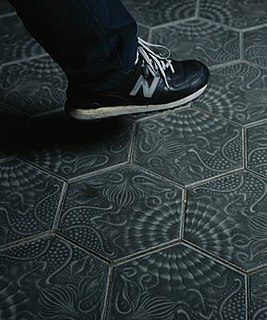
Juan Pablo Ballester is a Cuban-born artist who works mainly with photography and video art, although he has also worked with installations and performance art. He has also developed activities as a curator, assistant curator and cultural manager.
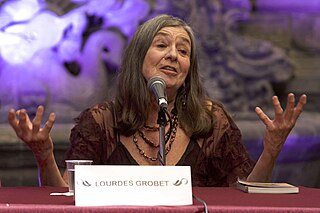
Lourdes Grobet Argüelles is a contemporary Mexican photographer, known for her photographs of Mexican lucha libre wrestlers.
Lissette Solórzano is a professional photographer born in Santiago de Cuba in 1969. She has worked as a medical photographer, photojournalist, photo curator and graphic designer. She has won many prizes – such as the “Photographic Essay Prize” of the Casa de las Américas - and her work has been exhibited in museums and galleries throughout Cuba as well as in Mexico, in England and in the United States. She is also a member of the Cuban Writers and Artists Union (UNEAC).

José Manuel Fors is a contemporary Cuban artist born in Havana in 1956. His work is principally based on installations and supported by photography. His first artistic forays, during the early eighties, were part of what has been coined "The Renaissance of Cuban Art". His artwork has been shown in renowned museums and galleries in the United States, Europe and Cuba.
Ricardo Gómez Pérez is a Venezuelan photographer. His work has been presented in galleries throughout the world, including exhibitions in France, Sweden, Japan, Netherlands, Belgium, and the United States. One of his most notable artistic works is "Primeros Pasos", which is a series of black and white photographs of his children with slightly out of focus backgrounds. He worked in Europe starting in the early 1970s until he returned to Venezuela in 1987. He currently works with his partner Ricardo Jiménez under the name of RICAR-2. The duo specializes in corporate portraits and photographs for magazines such as Global Finance, BusisnessWeek, Voyageur Magazine, Gatopardo, Gerente, Complot Magazine, and Ocean Drive.
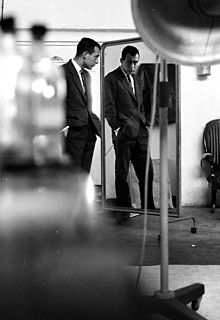
Xavier Miserachs i Ribalta was a Catalan photographer. He studied medicine at the University of Barcelona, but left school to be a photographer. He exhibited his work in Barcelona from 1956. His work is reminiscent of neorealism and is representative of the years of Spanish economic recovery, 1950–1960. His photographs show him as a creator of a new image of the city and its people. In 1998 he received the Creu de Sant Jordi of the Catalan government.

The Can Tinturé Museum, in Esplugues de Llobregat, is located in a house built at the end of the 19th century by architect Claudi Duran i Ventosa, and is the first monographic sample tile museum in Spain. The Can Tinturé Museum also manages the museum at the Pujol i Bausis factory, La Rajoleta, which was a point of reference in the production of Catalan industrial tiles, especially during the highpoint of Art Nouveau. The Museum is part of the Barcelona Provincial Council Local Museum Network and of the territorial system of the Science and Technology Museum of Catalonia.
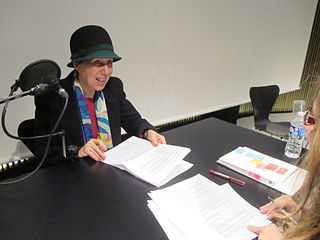
Eulàlia Grau, also known by her given name, Eulàlia is a Catalan artist. She was born in Terrassa in 1946. After training in Fine Arts at the Escola Eina and in design in Milan, she began her work starting from collage, using photographs taken from the written press, adopting a critical attitude towards information given out by the communication media. Her works carry a significant political charge and social content.
http://www.enriquebostelmann.com
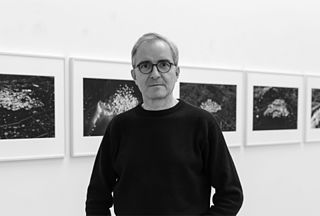
Jacques Pugin is an artist-photographer. He is one of the precursors of the Light Painting technique, which consists in capturing luminous traces during the photographic process, either via direct exposure of the sensor to the light source, or else to a lit subject. Jacques constructs his images by intervening either in the actual capturing process (incamera) or in post-production, using various techniques, such as drawing, painting or digital tools. If the subject of his early work was the Body, since then he primarily photographs Nature. A feature of Jacques Pugin's work is his particular focus on traces or signs, that indicate the presence of human or natural elements in the landscape. His photographs are a reflection on time, space and the complex relation between man and nature.

Isabel Steva i Hernández, whose pseudonym is Colita, is a Spanish photographer. She trained with Xavier Miserachs i Ribalta and Oriol Maspons i Casades, and began her professional career in 1961 as a lab technician and stylist for Miserachs.

Scott MacLeay is a Canadian photographer, composer and new media artist. His images, like his music, often deal with juxtapositions of fragmented elements in multilayered environments. He began his career in Vancouver, British Columbia, Canada, in the later 1970s, moving to Paris in 1979. In 2010 he moved to Florianópolis, Brazil.
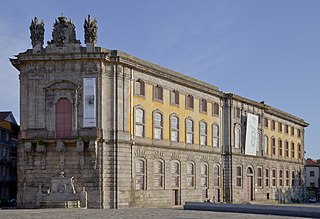
The Portuguese Centre of Photography was founded in 1997. First exhibitions were held in December of the same year on the ground floor of building until 2000. The building was temporarily closed for renovation and reopened in 2001.
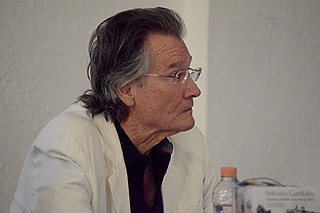
John Mraz is a pioneer in the representation of history in modern media.
Born in Sicily, Carmelo Bongiorno began photographing in 1978 by focusing primarily on his island, he photographs in black and white.
Geraldo de Barros was a Brazilian painter and photographer who also worked in engraving, graphic arts, and industrial design. He was a leader of the concrete art movement in Brazil, co-founding Grupo Ruptura and was known for his trailblazing work in experimental abstract photography and modernism. According to The Guardian, De Barros was "one of the most influential Brazilian artists of the 20th century." De Barros is best known for his Fotoformas (1946-1952), a series of photographs that used multiple exposures, rotated images, and abstracted forms to capture a phenomenological experience of Brazil's exponential urbanization in the mid-twentieth century.
Mariana Matthews is a Chilean photographer, curator, and visual artist whose technique is mainly based on the use of documentary photography, contemporary art, and experimental art.
Sheila Maureen Bisilliat is an English-born Brazilian photographer.

Arthur Ollman is an American photographer, author, curator, professor emeritus (San Diego State University, and founding director of The Museum of Photographic Arts, San Diego. He served as MoPA director from 1983 to 2006, and as director of the School of Art, Design and Art History, SDSU, from 2006 to 2011. He was president of the board of directors for the Foundation for the Exhibition of Photography and has authored and contributed to more than twenty-five books and catalogs.
Carlos Bosch was an Argentine photographer, photojournalist, artist and anthropologist exiled in Spain during the military dictatorship.